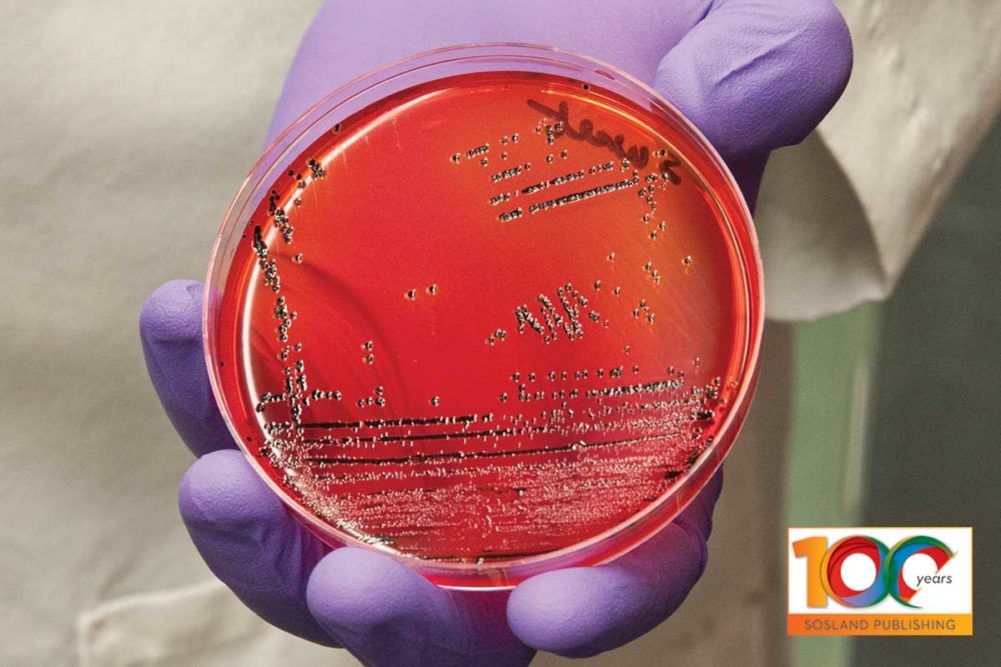Building off the foundation laid by the Food Safety Modernization Act (FSMA), the US Food and Drug Administration (FDA) announced its blueprint for the New Era of Smarter Food Safety last summer. This blueprint — a PDF document that bakers can find on FDA’s website — outlines the agency’s approach to food safety going forward. It leans heavily on the processes put in place by FSMA but also focuses on four core elements: tech-enabled traceability, smarter tools and approaches for prevention and outbreak response, new business models and retail modernization, and food safety culture.
“The New Era of Smarter Food Safety is an approach to bending the curve of foodborne illness through the use of new technologies and approaches,” said Frank Yiannas, deputy FDA commissioner.
This new era is ushered in by the final rule of FSMA that needs to be implemented. The Traceability Rule, currently under review, digitizes traceability and provides transparency across the supply chain. Companies that manufacture, process, pack or hold food on the Food Traceability List will capture required data points, store them electronically or in paper records for 24 months. Companies must also share key data elements with other partners in the supply chain.
“The vision for the FDA is that trading partners would be able to speak the same language through the standardization of what they are calling critical tracking events and key data elements,” said Julie McGill of FoodLogicQ during an educational session at the American Society of Baking’s technical conference earlier this year. “Tech-enabled traceability will enable companies to meet the expectations of this new era of smarter food safety and eventually get to the place where interoperability is within those systems.”
While previous FSMA rules have left room for different industries to adapt their existing processes, this proposed rule will call for industry to conform to FDA.
“FDA has been good about setting broad parameters, and individual food sectors can tweak their best practices to fit regulations, rather than FDA being overly prescriptive,” said said Rasma Zvaners, vice president, regulatory and technical services, the American Bakers Association (ABA). “We support food safety, but we strongly encourage FDA to keep it simple. We feel that some of this may be overly prescriptive.”
While the public comments are closed for this rule, the FDA has not issued a final rule, but has until November 2022 to do so.
FDA’s blueprint also will explore using technology and data in prevention and outbreak response, but also promoting safety in new business models like e-commerce and the expanding market for food delivery. These accelerated markets pose new challenges for the safe handling of food. Some of these business models were new or nonexistent when FSMA was signed into law, and therefore aren’t adequately addressed.
While most of the baking industry uses a kill step such as the oven or fryer to control pathogens, that fatal peanut butter tragedy of 2008 has everyone re-thinking pathogens and what high-risk really means.
[Related reading: FSMA empowered FDA to enforce preventative food safety measures]
“Peanut butter wasn’t considered a high-risk food before that because it is a low water activity product,” said Meaghan Meyer, senior vice president of food safety and quality for Indianapolis-based CraftMark Bakery and co-chair for ABA’s food technical regulatory affairs professional group. “But science is showing us that pathogens survive in low water activity products, and there is a significant concern of post-kill step contamination of products with pathogens. This contamination can happen from contaminated raw material added after the kill step or post-kill step contamination from an environmental factor in the bakery.”
The increasingly complex global supply chain will also be under the microscope of food safety moving forward. This has become even more important considering the recent challenges the supply chain has experienced.
“The supply chain is more complicated than ever before as we source raw materials from multiple suppliers across all parts of the world,” Ms. Meyer said. “Ensuring that we have a safe, consistent supply is more important than it has ever been.”
As Sosland Publishing Company, publisher of Baking & Snack, gears up to celebrate 100 years of providing food industry professionals timely information, news and commentary, we will be publishing a series of articles across all our titles to celebrate the past, present and future of the people and industry that feeds the world.
This article is an excerpt from the September 2021 issue of Baking & Snack. To read the entire feature on Centennial Report: Food Safety, click here.





